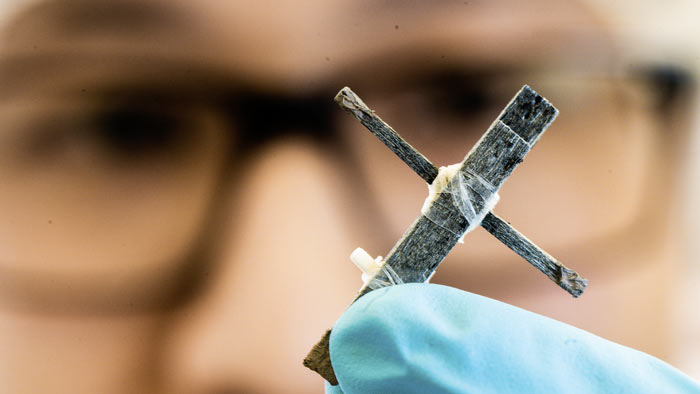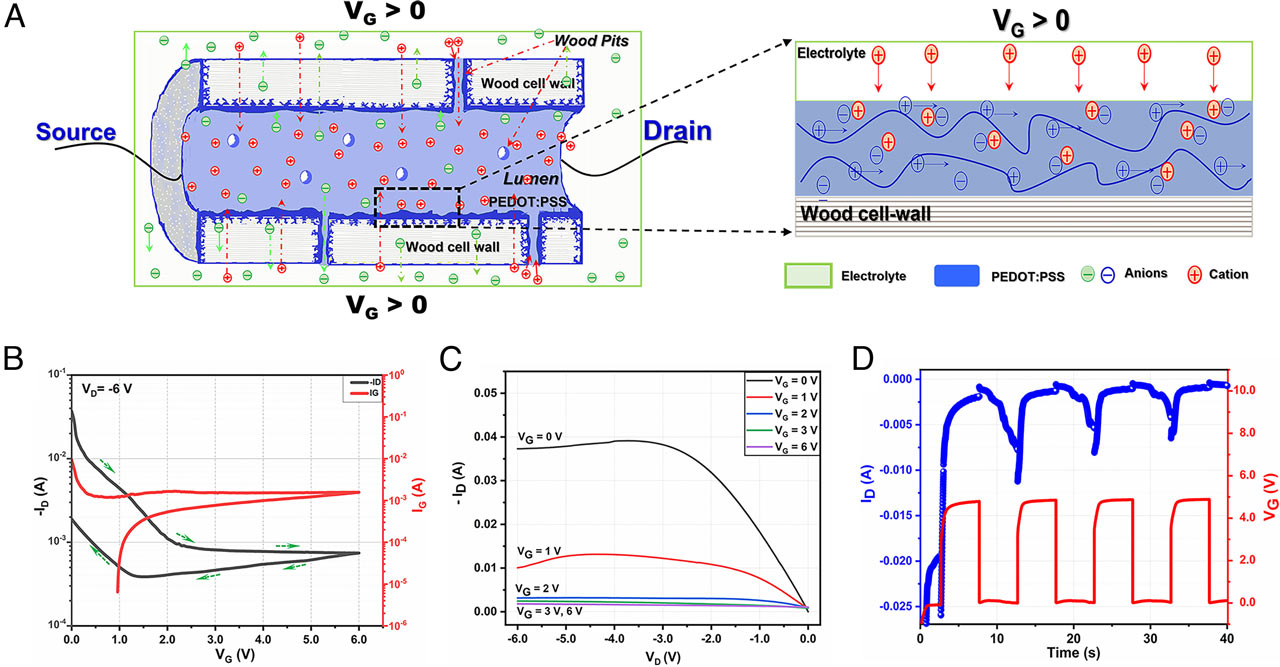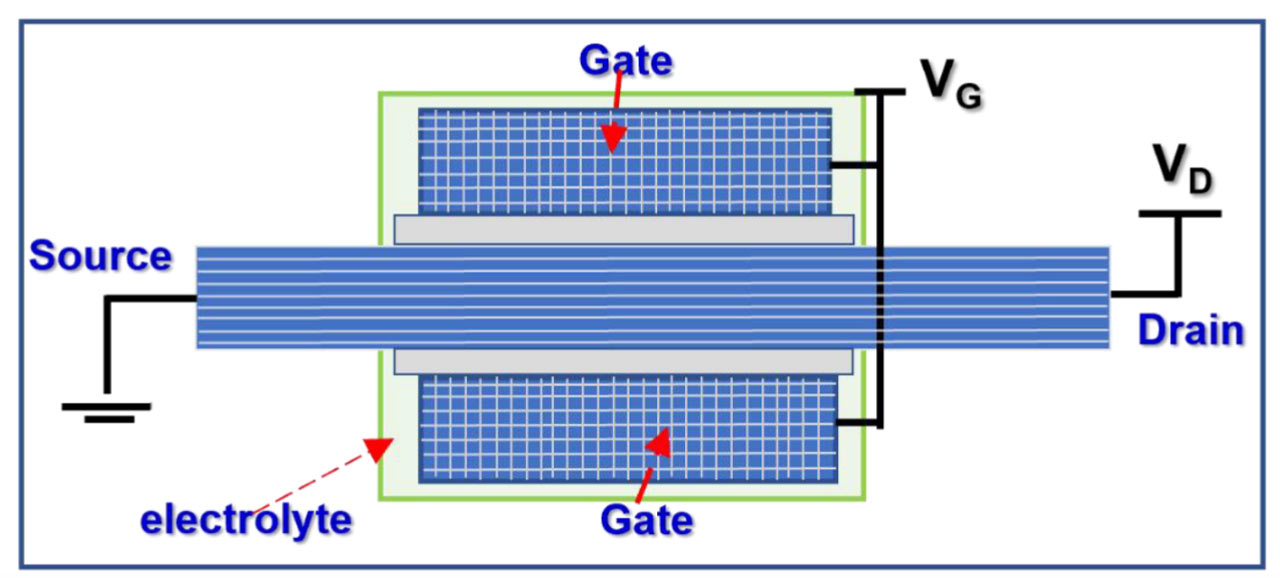
The idea of silicon transistor and processors is so . . . 2022. Researchers in Sweden have designed and tested the first wooden transistors. Teams at Linköping University in Norrköping, and the Royal Institute of Technology in Stockholm, have published a paper titled Electrical current modulation in wood electrochemical transistors, which discusses the creation, capabilities, and potential of the wood electrochemical transistor (WECT) they have recently developed.
This WECT could pave the way for wood-based electronics that are more sustainable and biodegradable. Moreover, wood electronics could deliver the electronic control of living plants.
Not Nanometers, But Centimeters
Regular readers will be very familiar with the latest advances in silicon transistor technology. Almost daily our headlines relay advances from Intel, Samsung and TSMC, battling to create leading edge processes, with transistors measured in nanometers, and running at multi-gigahertz speeds. Brace yourself now though, as the WECT designed and tested by the Swedish researchers measured 3cm across and had a switching frequency of under one hertz.
Not every electronic device needs the fastest speeds and smallest transistors. Certainly, the WECT as described is rather big and doesn’t like to be hurried. “We've come up with an unprecedented principle,” Isak Engquist, senior associate professor at the Laboratory for Organic Electronics at Linköping University stated in a university press release. “Yes, the wood transistor is slow and bulky, but it does work, and has huge development potential.”

How Wood Turned Into a Transistor
To describe how wood can be used to make a transistor, let us start by looking at conventional transistors that are widely used in electronic devices. Field effect transistors are a key building block of modern electronics and most commonly fabricated from semiconductors like silicon or germanium.
The inherent nature of these elements allow a transistor to act as an amplifier or switch when a voltage or current is applied to its terminals. Since the first FETs were produced in the mid-20th Century, R&D has been continuous in miniaturizing them and coaxing them to run at extraordinary frequencies.



To create the WECT, the researchers required conductive wood (CW). This is made by removing the lignin from wood via a chemical solvent process. Subsequently the channels where lignin were present are replaced with a mixed electron-ion conducting polymer. In this project the chosen wood was Balsa (for its desirable inner channel structure) and conductive polymer PEDOT:PSS. To construct the WECT, three pieces of CW were used: one piece as the central transistor channel, and one each as top and bottom gate.
The WECT transistor is remarkable, even though it doesn’t have the kinds of specs we usually discuss on Tom’s Hardware. Rather than being an end in itself, the researchers say they provided evidence of the wood transistor’s possibilities, and hope that they will inspire future work and applications.







